Tips For the Upcoming Hoops Season!
Less fear, more awareness of a full squat progression
[Note: All shoes and equipment are now 25% off for ATG members for the holidays! Now, to the article…]
1990s, Chicago Bulls, 6’10, 245-pound Horace Grant, FULL squat.
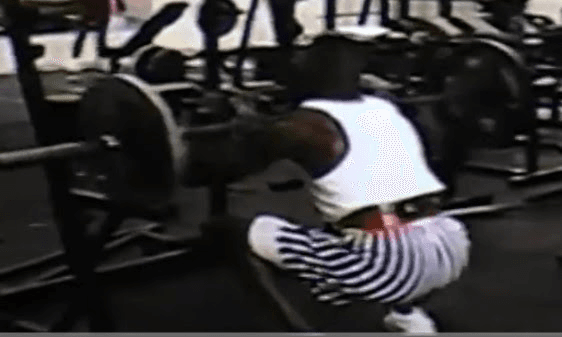
In fact, the majority (not all) of the 1990s Bulls were squatting with full range of motion.
My full squat inspiration/mentor, Charles Poliquin, told me the Bulls were the only team in the NBA doing full squats. That was because their strength coach, Al Vermeil, refused to take the job unless he was allowed to teach the players full squats.
Vermeil - brother of NFL Hall of Fame coach Dick Vermeil - is still the only strength coach in history to win both NBA and NFL rings!
2004, Swedish Olympic gold medal high jumper, 5’11, 157-pound Stefan Holm, FULL squat.
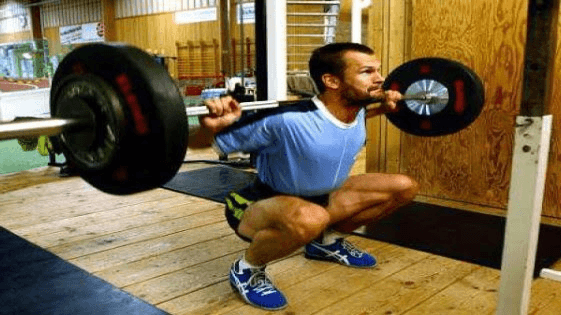
Meanwhile in America, full squats were not allowed in the programs of high jumpers.
To this day, Holm is the best high jumper in history relative to height (most actual distance covered) and MORE IMPORTANTLY: The most resilient high jumper ever, able to compete more often without injury than anyone else.
2020s, University of Houston men’s basketball, 6 STRAIGHT SWEET 16s and counting, despite having nowhere near as many high-rated recruits as any of the other top teams during this time… FULL squats.
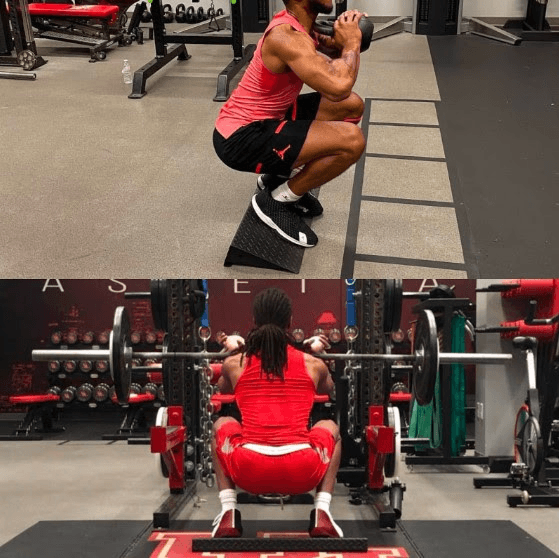
Their strength coach, Alan Bishop, was also mentored by Charles Poliquin. We’ve become good friends over the years, coming to near identical conclusions on a step-by-step full squat progression for basketball teams.
Now to throw you one out of left field: 1970s, bodybuilder Tom Platz, FULL squats… And today? AGE 70, STILL TEACHING full squats!
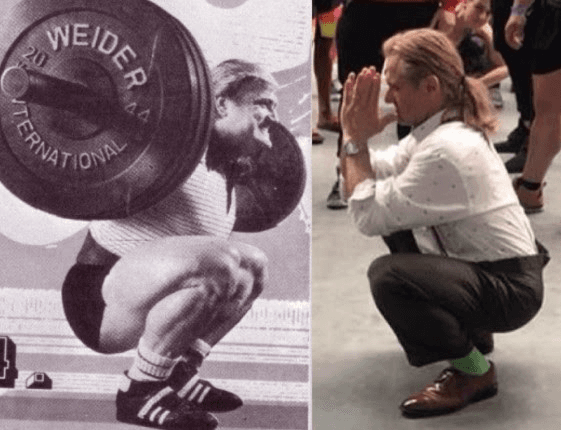
So why say all this?
Because I grew up being told by every trainer that full squats and knee over toes training were bad.
My major knee problems started at age 12 and didn’t improve until my early 20s by using knee over toes progressions.
I earned the starting point guard spot on a junior college basketball team, helped my team win two straight conference championships, and received full scholarship offers to 4-year colleges, only to be told at every one that I wasn’t going to be allowed to do my knee over toes regimen!
So the purpose of this article is to reduce fear and increase awareness of a full squat progression that has consistently helped basketball players and people from all walks of life.
(Note: The fear of full squat and knee over toes came from universities in the 1970s.
They did not have long-term research.
The broadest research in universities now concludes:
“Provided that technique is learned accurately under expert supervision and with progressive training loads, the deep squat presents an effective training exercise for protection against injuries and strengthening of the lower extremity. Contrary to commonly voiced concern, deep squats do not contribute increased risk of injury to passive tissues.”)
PROGRESSION
Heel elevation helps make up for lost mobility. I coach with a fleet of slantboards and allow trainees to use whatever level of heel elevation feels good for them.
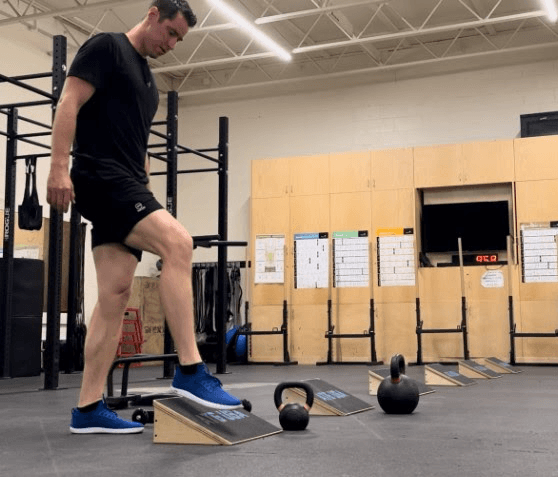
Even if you’ve got great mobility, a slant can provide even more depth and knee development. For example, Stefan Holm and Tom Platz (pictured above) are wearing special slanted shoes for this purpose.
Counterbalance then helps reduce the load on the knee, so I use a progression of both load and closeness to body.
Common implements put into a step-by-step progression are:
Plate, full reach
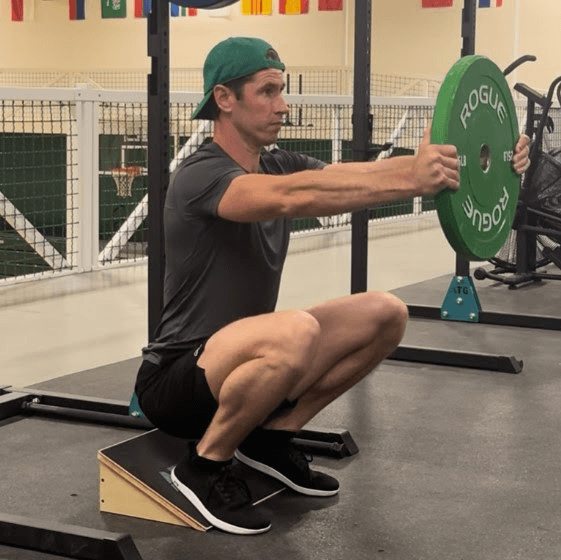
Heavier plate, closer to body
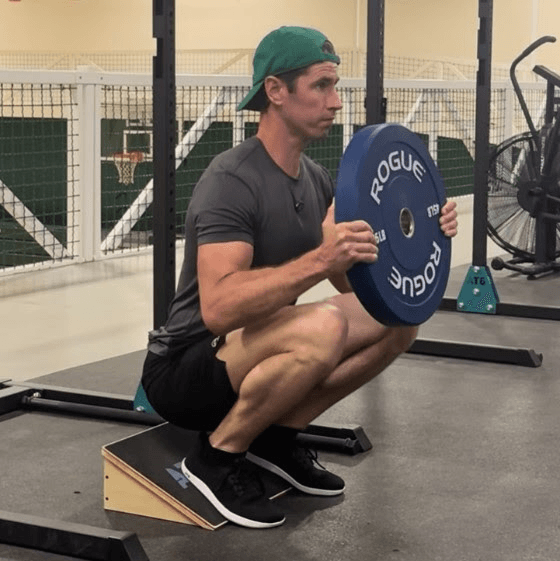
Dumbbell or kettlebell (heavier and closer)
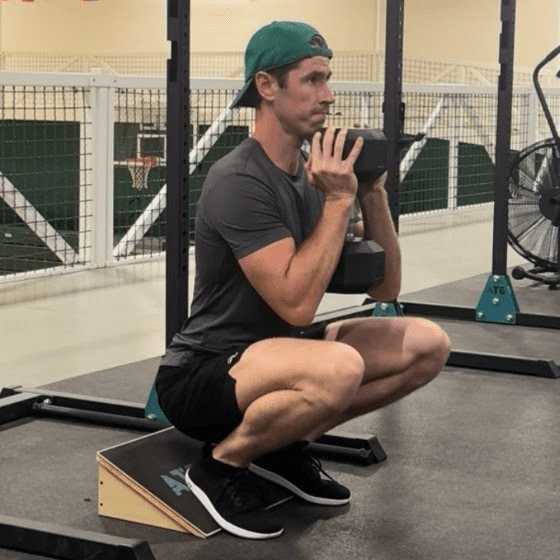
Bar on front (even heavier and closer)
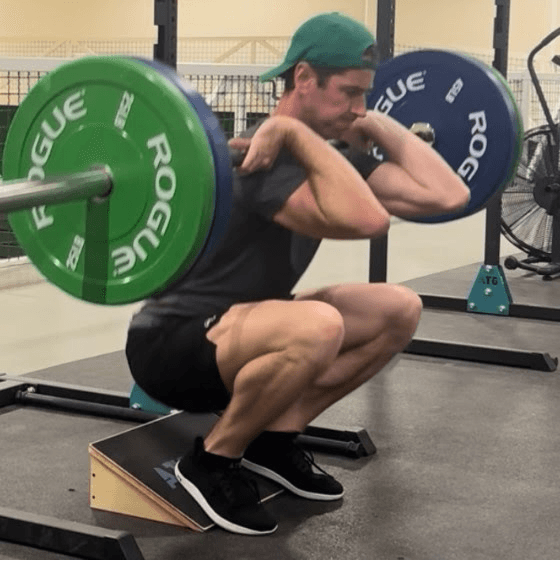
(Bar on back can then provide even heavier loading, if desired.)
PROTOCOL
A huge variety of sets, reps and tempos can work, but Alan Bishop and I both came to the same conclusion:
5 seconds down! OWN it. Don’t let the weight break your control.
Then PAUSE. No bounce.
Then explode up.
I suggest 3-5 sets like this.
BONUSES
The slant step-up is the most important secondary exercise I’ve seen for basketball.
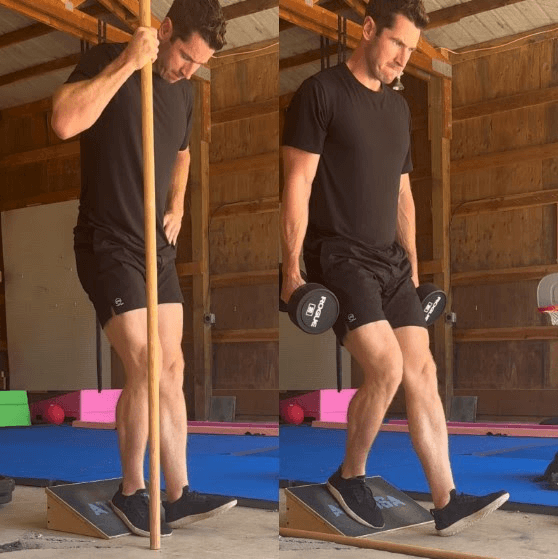
Basketball puts extreme demand on the knees.
The slant step-up gives you a simple exercise to increase knee ability.
Never work through pain.
Slope, size of step, and load all modify difficulty.
2 sets of 25 is my starting protocol.
This not only trains leg muscles but also helps improve the tendons (the things that hold muscles to bones), which hurt so commonly in jumping sports that the pain is called “jumper’s knee.”
In my coaching and athletic experience, this is the most effective exercise for jumper’s knee.
It’s common sense, but I would also advise achieving lower leg and hamstring strength above the norm.
Single leg calf raise is my top lower leg choice for basketball. Get as strong as you can for up to 10 reps per side. I also suggest throwing in a set of tibialis rotations to failure (toes up, down to big toes, toes up, down to pinky toes, repeat till burnout!).
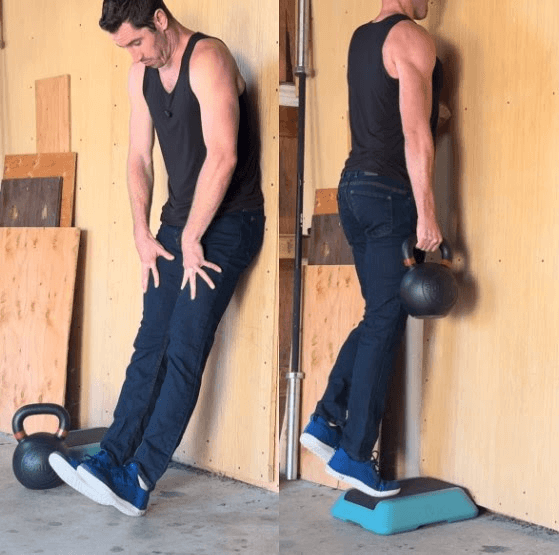
And for the back of the thigh I use a progression from two leg ham roller…
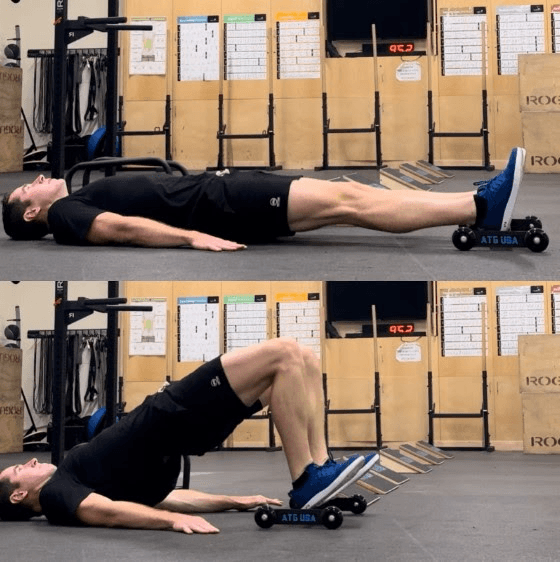
…to two up one down…
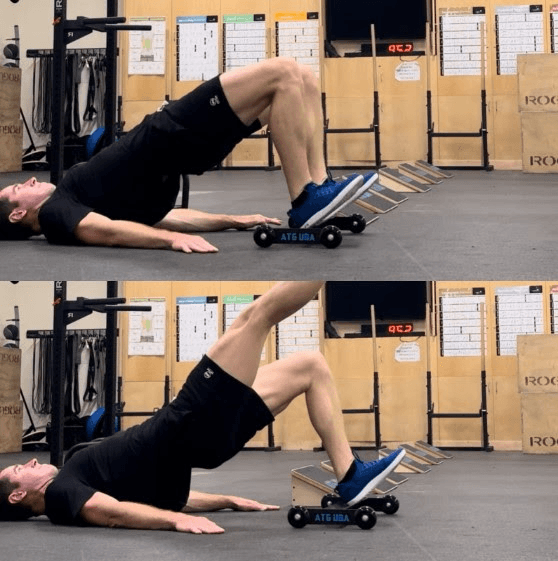
…to one leg…
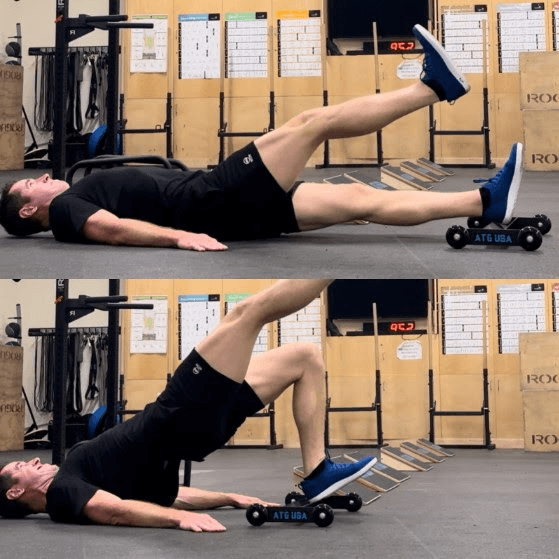
…to Nordic negative (resisting on the way down, then pushing back up with your hands).
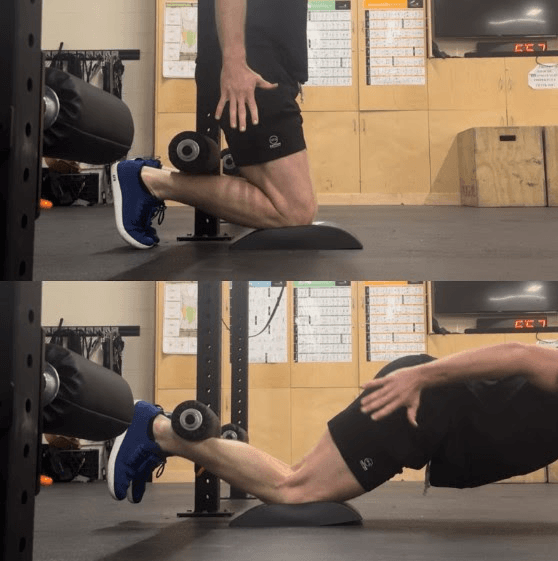
CONCLUSION
I hope this knowledge helps coaches and players out there who are getting ready for hoops season.
The same tools have also been life-changing for football, soccer and skiing, to name a few.
Sports demands can be extreme, so my number one advice is to find a system of knee ABILITY (rather than the previous norm of avoidance) that works for you and your lifestyle.
Yours in Solutions,
Ben
Sign up for free knowledge
We send out new articles weekly.